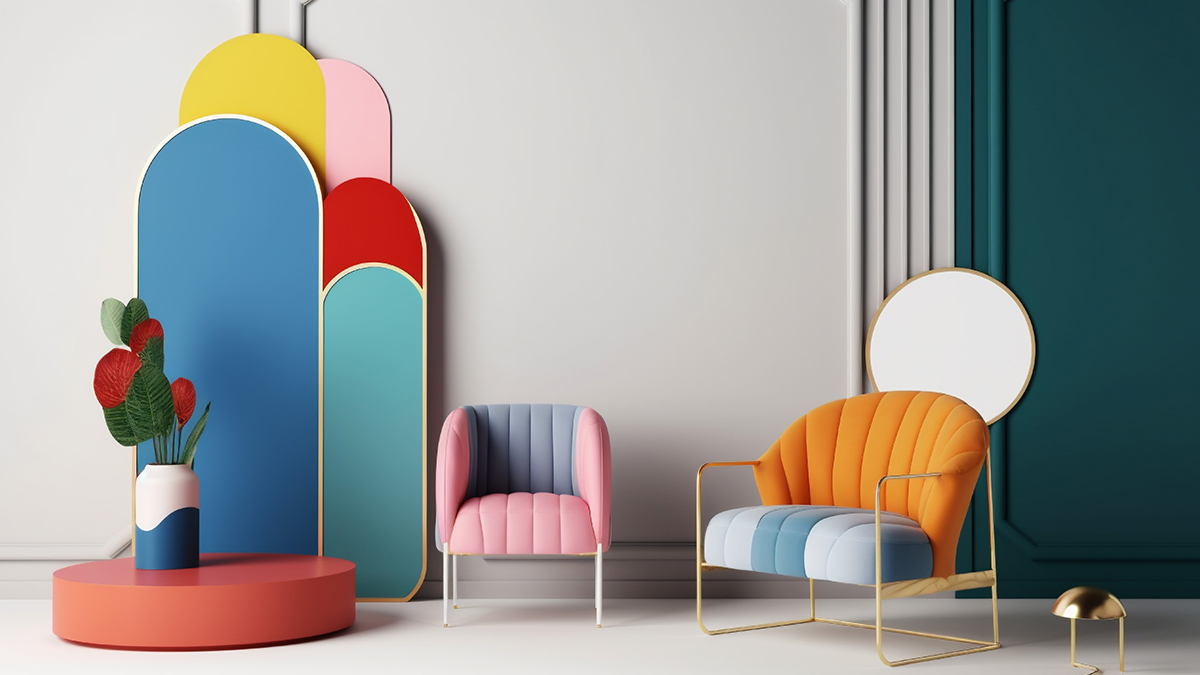Colours are not just visual stimuli; they have the remarkable ability to influence our emotions, behaviours, and perceptions, making them powerful tools in interior design.
Understanding the principles of colour psychology allows you to create spaces that not only look visually appealing but also evoke specific moods and enhance overall well-being. Here's a closer look at how different colours can impact our psyche and how to effectively use colour psychology in your interior design:
-
The Calming Effect of Blue: Blue is often associated with tranquility, serenity, and relaxation, making it an ideal choice for spaces where you want to promote a sense of calm and peace. Whether you opt for soft, pale shades of blue for a soothing effect or bold, vibrant blues for a more energizing vibe, incorporating blue into your interior design can help create a sense of harmony and balance.
-
The Stimulating Power of Red: Red is a colour that commands attention and evokes strong emotions such as passion, energy, and excitement. In interior design, red can be used to create a sense of warmth and intimacy, making it an excellent choice for spaces where you want to promote social interaction and vitality. However, it's important to use red sparingly and strategically, as excessive use of this bold hue can be overwhelming and agitating.
-
The Uplifting Nature of Yellow: Yellow is often associated with happiness, optimism, and positivity, making it an excellent choice for spaces where you want to promote a sense of cheerfulness and vitality. Whether you opt for soft, buttery yellows for a subtle glow or bright, sunny yellows for a more invigorating effect, incorporating yellow into your interior design can help create a space that feels warm, welcoming, and uplifting.
-
The Grounding Influence of Green: Green is often associated with nature, growth, and renewal, making it a soothing and grounding colour choice for interior spaces. Whether you opt for soft, muted greens for a calming effect or vibrant, jewel-toned greens for a more invigorating vibe, incorporating green into your interior design can help create a space that feels harmonious, balanced, and rejuvenating.
-
The Serene Quality of Neutral Tones: Neutral tones such as white, beige, and grey are often used as the foundation of interior design, providing a sense of balance, versatility, and sophistication. These understated hues serve as a backdrop for bolder accent colours and allow other design elements to take center stage. Whether you opt for crisp, clean whites for a modern look or warm, earthy neutrals for a cozy feel, incorporating neutral tones into your interior design can help create a space that feels timeless, elegant, and effortlessly chic.
When incorporating colour into your interior design, it's important to consider factors such as lighting, room size, and personal preferences to create a harmonious and balanced environment. Experimenting with different colour palettes and combinations of custom cabinetry also allows you to create a space that reflects your unique personality, style, and lifestyle, promoting a sense of well-being and enhancing your overall quality of life. By harnessing the power of colour psychology in your interior design, you can transform your home into a sanctuary of beauty, balance, and bliss.


